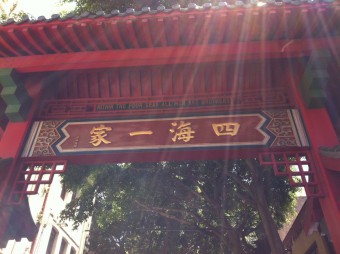
My mother was part of a wave of young Asian immigrants who arrived in Canada in the early 1970s.
Leaving almost everything behind, she took a chance to find opportunities unavailable in Hong Kong. Her story would not have been possible without reforms during this period that finally ended a century of exclusionary immigration laws and increased opportunities for immigrants from Asia.
To this day, my mother speaks fondly of the Prime Minister who initiated some of these changes.
She has another story: soon after she arrived, she went to work in one of the many Chinese cafes that can be found in almost every small town in Canada. One day, an immigration officer suddenly showed up at the cafe and asked her bring him her passport. Still on a student visa at the time, she ran back home, terrified that she was about to be arrested and deported. But when the officer checked her passport, he converted her status to a permanent resident on the spot.
For his part, my father, who grew up in Macau, earned a Masters degree in San Diego. He had a cousin living in Vancouver, so decided to drive up and visit. After a few weeks, he was impressed by the beauty of the West Coast and decided to immigrate. His application was quickly approved and my parents eventually met, married, and raised their family in Canada.
My parents tell me these stories to show how different things were when they first arrived: immigration procedures have become so complex that what they experienced could never happen today. There were relatively few immigrants in those days, and even fewer Chinese. Because they spoke the version of Cantonese prevalent in Hong Kong and Macau, they had to pick up the Toisan dialect that was spoken by most Chinese in Canada at that time (I didn’t realise this until a few years ago when, to my surprise, I heard them break out in Toisan dialect to talk to some elders).
Although they were still relatively new immigrants when my sister and I were born, they have since lived more than half their lives in Canada even though the experience of immigration continues to inform their social circles, where they shop, what newspapers they read, and so on.
Their itineraries have, in turn, marked my own life, often in ways I can barely understand, let alone articulate.
Although I didn’t understand this it at the time, I gravitated to the study of Asian diaspora literature to get some handle on the collision between what Maxine Hong Kingston memorably called the “invisible world the emigrants built” and the “solid” world of the second generation. Stories are indispensable for making sense of these worlds, for even though stories can be personal and idiosyncratic, they nevertheless unfold in social and historical contexts that are not of our own making. Returning to my own family, I am struck not only by how memories of migration have shaped the most intimate aspects of our lives, but also how the experiences of my parents and others like them are a window into modern histories of race, nation, colonialism, and capital that are by definition global in scope.
How, then, might we look beyond the national boundaries that usually define immigrant stories and pay attention to global histories and the transnational movements?
For some time now, I have had the privilege of interacting with scholars and critics in Asian Australian Studies, and these experiences have pushed me to tell a wider story.
By revealing unexpected parallels between our pasts and presents, their work has challenged me to place Canada in a bigger picture. For example, when Canada sought to restrict Asian migration in the nineteenth century, authorities pointed to laws passed in Queensland as models for their efforts. Since then, Australia and Canada have, in different but related ways, responded to the global movements and displacements of peoples. When my relatives Hong Kong debate whether to send their children to Sydney or Vancouver, these seemingly private decisions are a window into the social structures that make those two cities and countries comparable in the first place.
My visits to Australia have not only taught me about cultures and issues that were previously unfamiliar, but also prompted me to move beyond Canada-centric understandings of settler colonialism, multiculturalism, cultural politics, and the relationship between academic work and activism.
As both Australia and Canada continue to grapple with the legacies of Indigenous dispossession and the racialisation of minorities, the AASRN reminds me that our work as teachers, writers, and researchers can have transformative effects in the lives of our students, colleagues, and communities.
In 2011, I was able to attend the AASRN’s 4th conference (AAI 4) in Melbourne, where I was inspired by the critical mass of scholars, filmmakers, artists, writers, and activists that I encountered. Frankly, I felt more than a twinge of jealousy that forums like AAI were being held regularly, and that AASRN creates various opportunities to mentor graduate students and other emerging scholars.
After I returning to Vancouver, I started working with some colleagues to try out some of these ideas, albeit on a smaller scale. My larger point here is that both Asian Canadian Studies and Asian Australian Studies navigate institutions in which minorities are marginalised and/or co-opted, which makes network building, particularly across long distances, difficult to sustain.
In the face of these challenges, my colleagues in Australia remind me to remain attentive to the stories of migration that permeate our diasporic lives, and find in them the knowledge and wisdom to re-imagine our shared futures.

